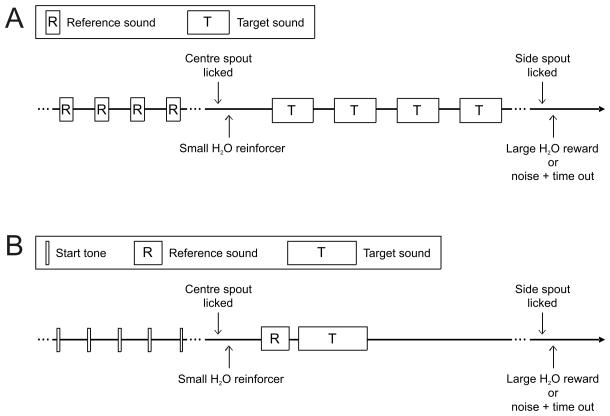FIG. 2.
Discrimination trial schematics. (A) In the first three stages of training, a reference stimulus was repeated until the ferret initiated a trial by activating the central spout. Then a target stimulus of a different frequency was presented repeatedly until the animal responded. The ferrets' task was to indicate whether the fundamental frequency of the target sound was higher or lower than that of the reference by activating the right or left peripheral spouts, respectively. In training stages 1 and 2 the stimuli were pure tones, and in stage 3 they were click trains. (B) In training stages 4 and 5 and in testing, a “ready signal” consisting of a repeating 5000 Hz tone pip was presented to indicate to the animal that a trial could be started by licking the central “start” spout. The reference and target sounds were each then presented only once, in quick succession. As above, the ferrets' task was to indicate the direction of pitch change between the reference and target sounds by responding at the correct peripheral spout. The sounds to be discriminated were click trains in training stage 4 and an artificial vowel sound (formant-filtered click trains) in the final training and testing stages.

